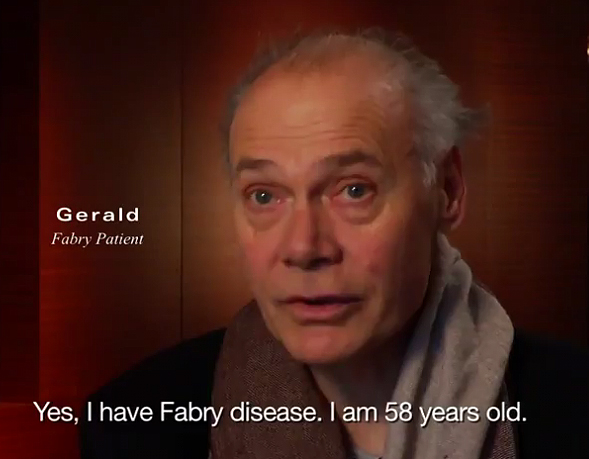Genzyme is taking rare disease awareness to another level with a documentary film, dubbed “Facing Fabry Together,” that follows four families grappling with the genetic disorder.
Genzyme manufactures Fabrazyme, an enzyme replacement therapy, for the disease, a lysosomal storage disorder which causes buildup of a substance (called GL-3, for short) in the blood vessels and other tissues. Ultimately, this accumulation, caused by a genetic deficit of the enzyme that would otherwise sweep away GL-3, can lead to kidney failure, heart disease and strokes that hit many patients in their 40s and 50s

The aim of the film is both to raise awareness of the disease and to educate newly-diagnosed patients, along with their caregivers and physicians, about what it means to live with the Fabry, which afflicts between 5,000 and 7,000 people worldwide. It’s a progressive disease. Many patients start experiencing pain and burning hands in early childhood, said senior product manager for global marketing Jennifer Wound, but because of the absence of visible symptoms, they suffer undiagnosed for years.
“The reason we chose the video route is that where even with some of the other orphan diseases like Gaucher’s or Pompe, there are visible manifestations, with Fabry, it’s really not, and that makes it very hard to diagnose patients, so they go from physician to physician, and physicians say they’re just making it up,” said Wound. “There’s a chapter that really talks about that, the invisible disease, and how for many patients it’s almost a happy thing to be diagnosed, because you’ve finally figured out after all these years what you have.”
Because of its progressive nature, early diagnoses are essential and can mean much better outcomes, said Wound.

The idea of making a film to affirm the patient experience came out of meetings between the company’s global marketing group and patient advocacy groups, said Wound. Genzyme tapped Washington agency Toolhouse to produce the film and set about scouting for patients and families to profile. They wanted a good mix—large families, small families, young and old, rural and urban, men and women (while Fabry is thought of as a disease afflicting males, with women serving only as carriers, many suffer from a wide range of symptoms, notes Wound). The settled on four families, in Canada, Brazil, France and Germany. Their stories are interspersed with commentary from a pair of medical experts on the disease, nephrologists David Warnock, MD of the University of Alabama at Birmingham and Daniel Bichet, MD, M.Sc. of Montreal’s Hôpital du Sacré-Cœur and the University of Montreal.
The film crew spent two days with each family, producing 25 hours of footage.
The film debuted in April—Fabry Awareness Month—with a microsite featuring the film whole or in chapters and a YouTube channel with short clips. Genzyme’s patient advocacy group has promoted it to patient orgs, but the Sanofi company is largely relying on word of mouth and search to net viewers. Kits have gone out to global affiliates, and subtitled versions in Spanish, Portuguese, Finnish and possibly Slovenian are in the works.
The use of the full-length documentary as patient education tool isn’t entirely unprecedented—Janssen/Centocor’s Innerstate, which followed the lives of several young people suffering autoimmune disorders, inaugurated the idiom back in 2007.








